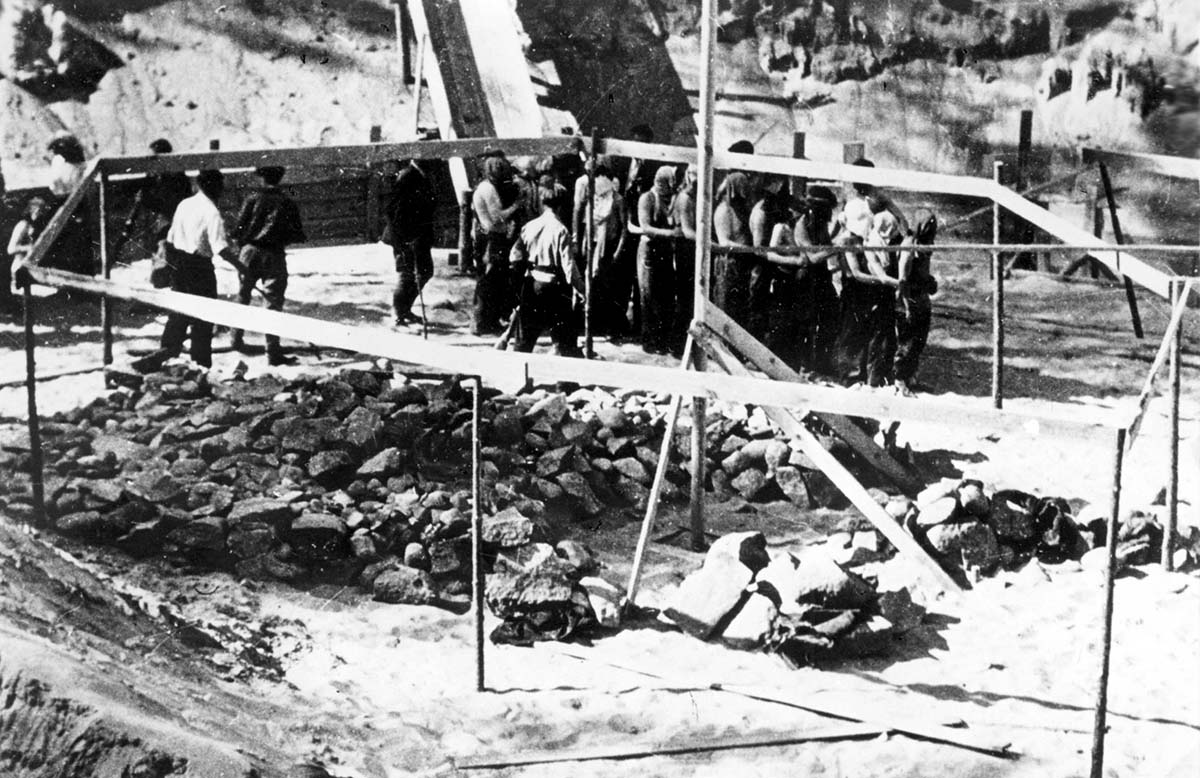Shooting is heard from the forest…
Ponary, the murder site of the Jews of Vilna and the surrounding area, was situated 10 km south of Vilna on the road to Grodno. Before the war it was a forested area used for holidays and recreation. Vilna residents used to go there for their summer holidays and to gather berries and mushrooms. The site was chosen for murder due to its proximity to the train track and also because there were pits 12-23m wide and 5-8m deep. There were high embankments with ditches between the pits, which had been dug by the Soviets in 1940 as a planned emergency fuel store.
Yad Vashem Photo Archives 2725/23
11th July. Lovely weather. It's hot out; there are white clouds and a gentle breeze. Shooting can be heard from the forest. Presumably from training. The shooting started at 4pm. Then I was informed that many Jews were transported to the forest via the road to Grodno and were then shot. This was the first day of executions. A depressing feeling. The shooting stopped at about eight in the evening.
For the Germans 300 Jews are 300 enemies of humanity. For the Lithuanians 300 Jews are 300 pairs of shoes, trousers and clothes.
, Ponary Diary, 1941-1943: A Bystander’s Account of a Mass Murder
From June 1941 until July 1944 over 75,000 people were murdered in Ponary, most of whom were Jewish, the others were Soviet prisoners of war and local opponents to the Nazi regime. The victims were brought to the murder site on foot, by motor vehicles and by train; in groups of tens, hundreds and thousands. There, they were shot and buried.
By 1943, Himmler had already established a special unit, Kommando 1005 , whose task it was to burn the victims' bodies in the murder pits and to hide any traces of mass murder. In Vilna, such a unit, composed of Jewish prisoners was established as well. At the end of September 1943 a group of 80 Jewish prisoners was sent to Ponary. At night the prisoners were kept in a pit and during the day they worked, with their legs in chains, they removed bodies from the pits, arranged them in piles and burnt them. The prisoners knew that when they had finished working, they too would be murdered. At night they dug a 35 meter long tunnel under the fence to a minefield. On the night of the 15th of April 1944, following three months of digging, they filed off their chains and forty of them fled through the tunnel. They were discovered by the guards and most of them were caught or shot. 15 of them succeeded in escaping and 11 of them reached the partisans in the Rudniki forests. In order to complete burning the bodies in Ponary, the Germans brought 70 people from , who were then murdered before the German retreat from Vilna. According to various estimations, Kommando 1005 burned over 60,000 corpses in Ponary.
In The Press
- Nazis Execute Thousands of Jews in Kaunas and Vilna Districts
Jewish Telegraphic Agency, 15 May 1942 - 60,000 Jews Executed in Vilna Last Month in Continuous Two-week Pogrom
Jewish Telegraphic Agency, 17 Jun 1942 - Germans Removing Traces of Executed Jews in Lithuania, 120,000 Still Reported Alive
Jewish Telegraphic Agency, 18 Apr 1944












